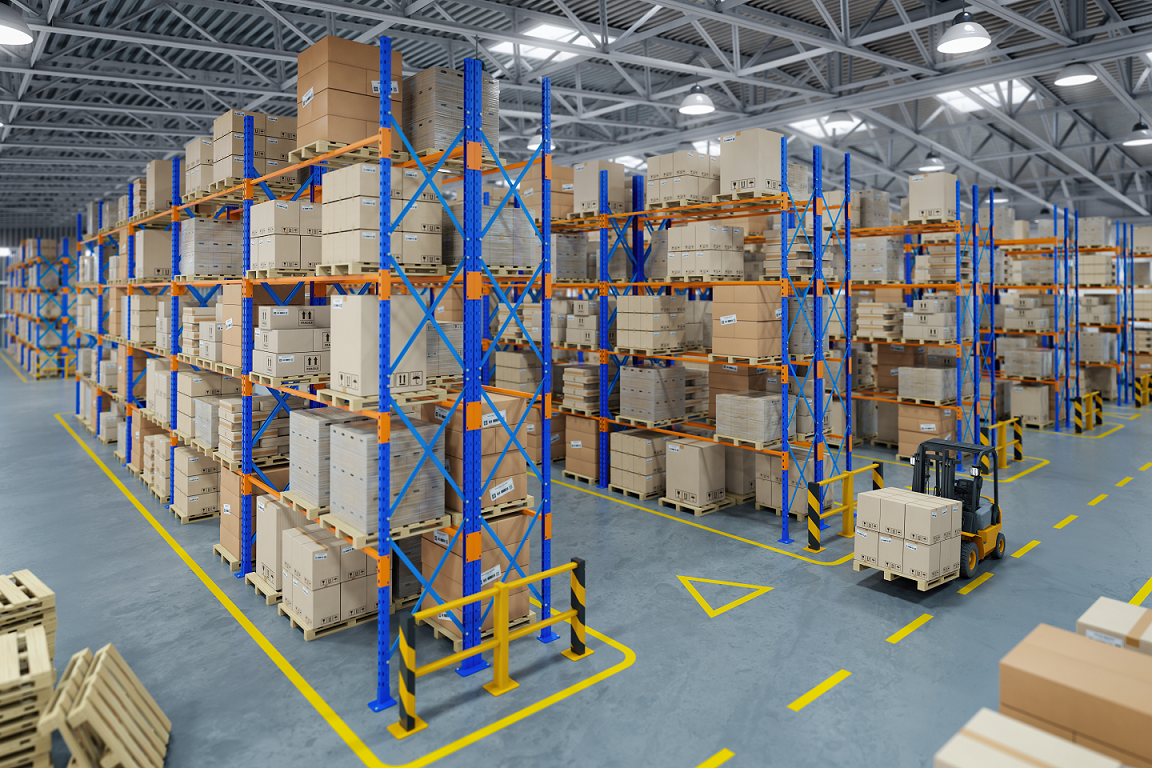Future stores & warehouses? Automated, but not without people, of course

Coca-Cola, LEGO, HORTIM, dozens of smaller and giant e-shops… DYNAMIC FUTURE has contracts for truly important players on the market, both in the B2B and B2C segment. Managing Director Jan Šlajer says that storage areas in the Czech Republic are increasing at a record pace. What do they look like today, and what will they be in five or ten years?
“We verified the first of the big warehouses in 2015, since then the situation has changed incredibly. Last year alone, around 9 million square metres of modern warehouses were fully occupied in the Czech Republic. And there are still more. The rents are also growing significantly, quite commonly by as much as 30 percent. So it is clear that companies are fighting for every metre, and if they already have it, they need to use it as effectively and efficiently as possible. Alternatively, to increase stock capacity,” says J. Šlajer.
Dynamic simulations will check all of the flows
One of the biggest orders that DYNAMIC FUTURE has recently implemented was Coca-Cola’s warehouse in Prague’s Kyje district. The production plant supplying ten European countries wanted to check the variants of manual semi-automatic and automatic warehousing in order to choose the most sensible solution.
Similarly, Hortim, a wholesale fresh fruit and vegetable company, approaches their warehouses. DYNAMIC FUTURE came up with the solution for the new warehouse in Slovakia, and the reconstruction of the warehouse in Brno. Jan Šlajer explains that Hortim has completed part of the storage space, and needed to test the model to streamline and organise the original.
“An advantage of dynamic simulations is that it shows all of the flows that occur in the warehouse. And this will help responsible persons to decide, for example, before acquiring equipment, innovation, or expanding warehouse areas,” the Managing Director points out.
From the shovels and spades to garden sheds
The size of the warehouse is not as important for its planning as the number of items and the process complexity. For example, for Meva, which is dedicated to the sale of goods for workshops and gardens, seasonality plays an important role in the planning of the warehouse. DYNAMIC FUTURE had to propose a solution reflecting the fact that the demand for individual products varies during the year. The complexity of such a warehouse also lies in very diverse items – rakes and small garden tools need to be packed, stored, and transported completely differently than breezeblocks and parts for garden sheds.
“Of course, this is not to say that in the case of year-round goods, work on dynamic models is easier. It is always necessary to design a solution to eliminate unnecessary manipulations. And also give the project the right software support and Warehouse Management System. At the same time, to secure everything by supporting barcodes, chips, and the like, to automate the warehouse workers’ volume as much as possible. Another important part of the simulation projects is the incorporation of suitable warehouse technologies. For example, when we design VNA trucks (Very Narrow Aisle) for very narrow spaces, we have to count on the appropriate warehouse height to make it worthwhile for such trucks,” says Jan Šlajer.
Warehouse or production facility – from the point of view of dynamic simulation, they are almost the same
DYNAMIC FUTURE’s experience shows that it doesn’t really matter whether they prepare the simulation for warehouse processes or a production facility. Companies, of course, look at it differently, for them there is a difference.
“In production companies, logistics used to be unwanted; they didn’t count on it as a process that adds value. However, production processes can be easier, using machinery that works automatically. On the contrary – when we look at a warehouse, it basically works like a production factory. Something stands, then it will be picked up, assembled… The assembly, preparation, packaging are basically production. But if you don’t set up automated systems in logistics, you always need a person to move the process forwards,” he explains.
Future warehouses will not be able to operate without people
It’s certain that we will increasingly replace human power in logistics. On the other hand, it is not possible to consider warehouses that the human hand would not touch.
“I saw a warehouse design that was automated to the maximum, where most things were controlled by robots. We have already solved a similar project in DYNAMIC FUTURE. A warehouse in which the goods are stacked into cars using a manipulator that drives itself, and the pallets interpret where it is needed. Autonomous trolleys are increasingly used, although many companies are still limited in their use by the prohibitive price. On the other hand, we need to say that even in the case of a high degree of automation; we need to have people in warehouses or production facilities to maintain the technologies. And this is a significantly more demanding activity than handling semi-finished products or finished products,” concludes Jan Šlajer, Managing Director of DYNAMIC FUTURE.
Related articles
Jun 7, 2024
DJI introduces its first delivery drone
DJI introduces its first delivery drone
Jun 7, 2024
5 expert insights into the world of dynamic simulations and logistics
5 expert insights into the world of dynamic simulations and logistics
Apr 2, 2024